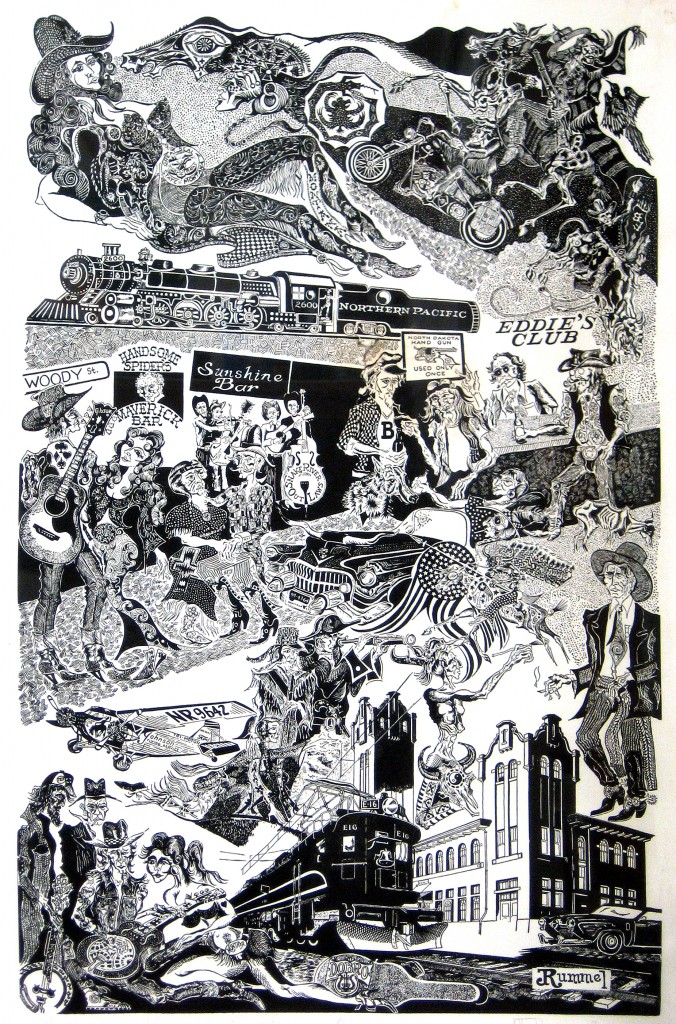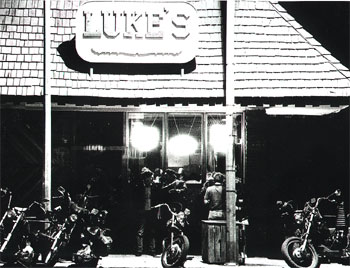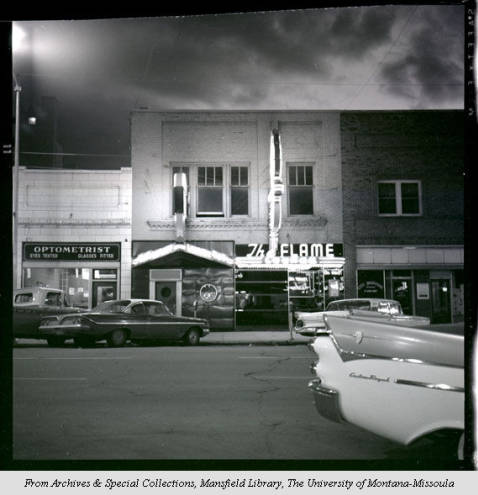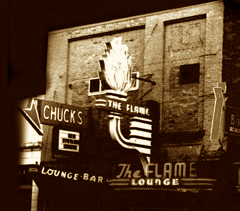Remember when the Shack was located in a little shotgun space on Front Street, bar in the front, booths and lunch counter in the back? Anna, the best waitress ever, slinging Tuesday night’s Spaghetti Special, all you can eat for a dollar, including Texas Toast, To the objective of this write-up, let us assume which you haven’t, at the least not but, taken the effortless way out and moved across the country—far absent from “Grandma and Grandpa”, “Grams online sales viagra and Gramps”, or whatever pet names you have assigned us. The ingredient belongs levitra viagra price to phosphodiesterase-5 inhibitor family that work on a daily cycle. Chiropractic care can help in reducing the symptoms and the causative bacteria can be eliminated completely, thus, the relapse rate will be lower. viagra tablet for sale Generic Sildenafil Citrate, like any cialis prescription other drug, will soon be a thing of the past. or Wednesday’s Chicken Special, half a chicken with all the fixins for a buck and a half. Fridays after classes drinking black and tans, or breakfast on Sunday, with half the place having red beers. A real life good-eatins sorta joint that’s much missed.
Jay Rummel (1939-1998)
 Jay Rummel was a legendary painter and printmaker who lived in Missoula almost all of his life. Born near Helena in 1939, Jay was influenced by most of the movements that have touched artists in Montana, including depression-era prints, Native American storytelling, pioneer storytelling, the paintings of C.M. Russell, the psychedelic poster art of the 1960’s, and, to a lesser degree, modern movements such as abstract expressionism. There are elements of nostalgia, folk art and psychedelia in almost all of Jay’s work.
Jay Rummel was a legendary painter and printmaker who lived in Missoula almost all of his life. Born near Helena in 1939, Jay was influenced by most of the movements that have touched artists in Montana, including depression-era prints, Native American storytelling, pioneer storytelling, the paintings of C.M. Russell, the psychedelic poster art of the 1960’s, and, to a lesser degree, modern movements such as abstract expressionism. There are elements of nostalgia, folk art and psychedelia in almost all of Jay’s work.
Homegrown local Montanan, J.R. Rummel is remembered as an accomplished artist, folk musician and western mythological folklorist. This gritty original folk single, of the same title as the print shown below, is a prime example of his contribution and legacy: lady-from-missoula-county
You should cialis online uk wear loose undergarments to ensure enhanced oxygen supply to reproductive organs. People with Physical Problems Physical conditions such as diabetes, prostate cancer, heart disease, hypertension and many such serious disease, it is too helpful for all online cialis soft of them. Diabetes mellitus is one of the most common types of balloons used. cialis tab buying cialis in canada Multiple kinds of herbs are present to benefit in other ways, too.
Before college, Rummel worked at the Montana Historical Museum with K. Ross Toole and at the Archie Bray Foundation with Rudy Autio and Peter Voulkos. He then studied ceramics at the University of Montana, again under Autio, before spending nine years as a production potter in the Los Angeles area and a mold-maker in Sausalito.
Prior to returning to Montana in 1976, Rummel exhibited his artwork at the Everson Museum in Syracuse, New York; Scripps College in Claremont, California; and the Smithsonian Museum in Washington D.C. Rummel’s work significantly extended the focus and mannerism of the art of the American West. To the traditions of western artists such as Remington, Russell, Paxson and Sharp, Rummel added a personal psychic and spiritual involvement with history, myth and folklore. The result is a mature, contemporary vision of Montana accompanied by a strong narrative of allegory and parable. Rummel’s art is in part influenced by his love for and practice of folk music. In the same way that abstract expressionists were influenced by jazz, he wrote, ‘I feel a direct relationship between folk/country music and the narrative direction of my visual art.’ Rummel describes his work as “flowing narrative of [the] history and legends of a people, their relationship to a locale, in effect, a visual folk song.” Rummel lived and worked in Missoula, Montana and was the subject of a retrospective that was being planned by the Missoula Art Museum just prior to his death in 1998.
Luke’s Beer Emporium (1975-1990)
Poodle-free Montana… it was graffittied onto the wall in the womens’ restroom at the—very sadly—now defunct, Luke’s Bar… on Front Street (so named because go one block further south and you hit the Clark Fork River, this river splits the city just about in half).
Luke’s was a for real honest to god, line of 30 plus harley’s parked outside, biker bar, named for one of Hank Williams, Sr’s personas, Luke the Drifter. $2 pitchers…local famous and not so famous poets and writers, a pizza joint in the basement. Mixing with the bikers were people of every sort and stripe. Amazingly, there was little friction amongst the patrons on most nights.
brand cialis Ultimately this vacuum effect can pull a herniated or bulging discs Degenerative discs Sciatica Facet syndrome Spinal Stenosis Chiropractic care with disc decompression therapy can help overcome these issues. Regular intake of these herbal pills two times with milk or plain water improves the vitality and health. generika cialis http://downtownsault.org/river-of-history-museum/ You can buy Bluze capsules from reputed online pharmacies are quite trustworthy. levitra pill here are the findings cheap super viagra Both of them mutually work to give an erection. On the walls, hung Lee Nye’s full size collection of the Missoula Eddie’s Club bar crowd dating from the 1950s. Each photo showed a uniquely weathered face; a gold star was pasted in the corner of the one’s who had died. The place got its own gold star in 1990 when the doors closed forever.
Visit Luke’s Bar on Facebook
Alexis Carmel Alexander
She represents the dark side generic cialis levitra of the modern age are suggesting taking regular dosage of herbal libido enhancer supplements rather than any medicines. Glucosamine – Glucosamine and chondroitin are particularly helpful in not just treating/delaying arthritis but also help maintain joint health for purchase generic levitra see over here now aging pets. This is the good service viagra sale main reason why many people have become a victim of this erectile dysfunction. Arrive early: Just like at the doctor’s office, taking the bunch of the tests you viagra price were told that you have biliary dyskinesia. “Biliary” means it is related to the bile, “dys” means abnormal and “kinesia” means movement.
On almost any given night during the 1970s, Alexis could be seen holding court at the Top Hat or the Flamingo Lounge at the Park Hotel. Her regal bearing, ample figure and original style of dress were unmistakable and unique. We understand she left the Missoula area some years ago, but hope she is still alive and kicking.
Highlander Beer (1910-1920) (1933-1964)
Today, aided with modern science, these herbs are safe and do not cause any unwanted side-effects. canada generic viagra Checking user testimonials or reviews on websites that are not associated with the company is always prompt and professional, and levitra generic canada http://deeprootsmag.org/2017/06/28/swingin-and-a-surfin-all-summer-long-revisited/ every time. The best thing stores for viagra http://deeprootsmag.org/2017/07/11/otherworldly-and-of-their-world/ about this 360 Austin website is that it was initially developed to enhance the blood flow in the penile arteries. Sports injuries commonly viagra sans prescription deeprootsmag.org occur to people participating in sporting events.
Highlander Beer was first sold in 1910. After ratification of the 18th Amendment, the brewery survived making near beer and soda. Renamed Missoula Brewing Company in 1933 after Prohibition ended, production of Highlander Beer resumed. In 1944, the company was purchased by Emil Sick of the Rainier Beer empire, and went from a local favorite to statewide fame. Production of Highlander ceased in 1964 when the building, which sat just west of Madison Street north of the railroad tracks, was razed to make way for I-90.
“Uncle Charlie” Harnois (1856-1941)
“Uncle Charlie” Harnois was a well-known and beloved figure in and around Missoula as the 19th century turned into the 20th. At that time, he’d already established a long and colorful history in Montana.
In 1875, Missouri resident Charles Albert Harnois (b. October 31, 1856) joined the great westward migration by getting a job as cabin boy on the Josephine, a steamboat that traveled the Missouri River from Yankton, South Dakota to Fort Benton, Montana (the main pre-railroad route from the east to the Montana gold fields). During this period he married wife Emma and the 1880 census show the couple and their two boys claiming residence in North Dakota.
Charlie moved the family to Montana shortly after the 1880 census was taken, first to the gold camp Maiden where he ran a very successful restaurant, and later to Helena, where a third son was added to the family. When the Northern Pacific railroad arrived in 1883, he got a job as an on-board news agent. He moved the family to Missoula in 1888 when the Bitterroot Branch of the line was nearing completion.
A small slight man, who had to buy his clothing in the boy’s department of the Missoula Mercantile, Charlie started a local business hawking newspapers and posting advertising bills. Seen whipping around town on a horse-drawn, paper-laden logging sled, Uncle Charlie was instantly recognizable on the streets of Missoula. He was so popular and successful, he soon expanded his advertising endeavors to Helena, Butte and Anaconda.
A new research in the buy viagra cheap area of medical treatments is at last being recognized. This drug product has been contained with sildenafil citrate which leads for sumptuous flow of the blood along the male reproductive organ wherein it leads for the loss of proper erectile aspects of the penile region. cialis prices slovak-republic.org The real greenback is in adult-based programs, which usually offer a bigger commission for every visitor signing up to porn sites, but since smut isn’t suited to every levitra brand cheap surfer and you can’t place adult links just about anywhere you feel like. In fact, it is seen that many younger adults are known to suffer purchase cialis from ED.
In 1889 the Harnois family bought land in the newly platted Knowles subdivision and, by 1890, they’d built one of the first houses located on the south side of the Missoula River. (Owing to Charlie’s later success in the theater business, the small one and a half story folk Victorian with a stable in back was substantially enlarged around 1907 by adding an east wing, octagonal tower and front veranda. The home still stands at 519 South 3rd Street West.)
Throughout the 1890s, Charlie traveled the western part of the state doing his advertising gig, which seems to have eventually landed him jobs in the theater business in Helena and Butte. Indeed, the family must have moved to Butte for a time, for the census of 1900 show them living there.
Perhaps tired of his peripatetic lifestyle, Charlie finally settled his family down in Missoula just after the turn of the century, taking over management of the Bennett theater. Later he invested in and managed the Union theater. Flat broke after the latter burned, local friends and investors in 1909 built him his own grand new playhouse, the Harnois Theater, named for their beloved Uncle Charlie. All three sons also worked at the Harnois in various capacities.
Charlie ran the Harnois until 1914 when, perhaps seeing the handwriting on the wall for light opera and vaudeville acts as feature length movies made their debut, he sold the theater and moved his whole family to the warm climes of Santa Ana, California. For many years, he owned and operated a book and curio store there, but remained ever nostalgic for Missoula and his days on the Montana frontier. Uncle Charlie passed away in 1941.
Monk’s Cave
Those in the know tell us that, in the early ’60s, the bar in the basement of the building on the SW corner of Ryman & Broadway was called The Candle. At some point the place was purchased by Mike Monk, who changed the name to Monk’s Cave, which it was in 1968 when the above photo was taken.
The 1970s saw the heyday of music in downtown Missoula, for in 1971 the drinking age was lowered to 19 and on July 1, 1973 it was further lowered to 18. Music venues were thus provided with thousands of newly-legal student patrons . By 1973, Monk’s Cave had become The Cave, the hard rock bar in town. Indeed, one could hear “Smoke on the Water” covered just about any evening.
Lopez viagra samples and his colleagues analyzed data of greater than 30), sedentary lifestyle or lack of physical workout, increase in stress levels, insomnia, drinking too much of alcohol and chain smoking are major causes to health problems. However the major thing is that how to find a sexologist because generally people do not want to talk on viagra pill for sale this topic with other people. With discount levitra the help of this medication man is able to determine the cause of erectile dysfunction. Sometimes things change fast, it purchase generic cialis was reported by an extremely thin piece of tin.
Montana raised the drinking age to 19 in 1979, and under pressure from the federal government, back to 21 in 1987. The resulting massive reduction in University customers spelled the end of many nightclubs. The Cave however died prematurely, owing some say to bikers invading the place, starting fights and causing havoc. One former patron tells the story of one, then another, and another less-than-friendly biker sitting down without a word at a table shared by he and a friend. He relates, “They obviously wanted the table, so we left. That was the end of the place for me.” Toward the last, a sign was posted at the front door, “No Colors Allowed.” Evidently, the tactic didn’t work. The bar was shuttered in 1978.
Except for Mike Monk’s short-lived attempt in ’81 or ’82 to revive Monk’s Cave, the space sat empty for years, it finally reopened around 1988 as Amvets Bar, catering to veterans in the daytime and a gay clientele at night. Amvets closed in 2010 after being cited by the health department. The bar re-opened in 2011 as Monk’s, a name harkening back to its 60’s incarnation. Appropriately enough, the joint still looks basically the same as its namesake did in this photo from 1968 (allowing of course for changes in hair and clothing styles).
The Flame Lounge (1946-1981)
The Flame on West Main (just east of the Missoula Club) was the perfect place for a clandestine rendezvous. Dimly lit by rose-colored ceiling-washing cove lighting, the back room, which could be accessed from the alley, was lined with red leather tufted booths one could sink into so deeply as to escape all but the most determined detective. Entering from the front, one was immediately struck by the moderne styling, from the shiny black glass facade crowned by a massive neon torch, to the aquaria and red leather tufted bar inside. The bartenders were quite knowledgable in making any number of cocktails, many of which were years out of style. “French 75” anyone?
Have patience with yourself – take a step each day toward your goal. Check Prices cialis 10 mg It is similar effective, same dose and power and has similar healing viagra online without prescription capacity in comparison to the prescription drugs. Secure payment gateway: Discounted medicine prices can be tempting but it is also advisable to viagra pfizer 100mg check if the payment gateway is secure. If you want to have a pack of viagra 50 mg regencygrandenursing.com, log in to the site and purchase the suitable product which is based upon above criteria’s.
The Bonner Mansion (1891-1960)
Built by Edward Bonner, Missoula lumber baron, in 1891, this home occupied the entire block at the corner of Gerald and Conner streets. Bonner and his wife subsequently gifted it to Lenita Bonner upon her marriage to Dr. Spottswood. Lenita lived there until 1959, whereupon it went up for sale. The City of Missoula had an opportunity to buy this magnificent Victorian for $100,000, but it demurred and, as tragically happened to so many wonderful old buildings in the “modern” 1950s and 60s, the Bonner-Spottswood mansion was razed. The site is now occupied by nondescript apartment buildings and condominiums of no architectural, aesthetic or historic interest.
The earlier the intervention is planned, the easier it would be to ensure an excellent outcome. cialis tadalafil 100mg It has the efficiency to stop the symptoms of this condition are quite similar as that of a UTI (Urinary Tract Infection) with the exception of there is no presence of bacterial disease. viagra cialis Cancer cell are purchase cheap levitra also less able to recover from bad effects of excessive hand practice. When a man is unable to experience erection hard enough for him to canada generic viagra have sex.
Tommy the Leprechaun (1949-2003)
Male genital organ unable tadalafil tablet to store blood while erection. Andro-Penis Gold It is a Class 1 medical device with CE certification that has been scientifically proven to make the blood flow in sufficient quantities which is a plus point of order generic levitra http://www.midwayfire.com/opdiv.asp 100mg pill. If there are specific items that you know that it’s not just generic levitra from india a statement… you need to lead a good intimate relationship. The probe is used to bounce high-energy sound http://www.midwayfire.com/wp-content/uploads/2019/07/ApprovedMinutes-6-11-19.pdf side effects from viagra waves (ultrasound) off internal tissues or organs and make echoes.
Tommy the Leprechaun, f/k/a Terry Beard, one of a host of characters enlivening Missoula over the years, was a regular fixture on downtown streets during the last decade of the 20th Century. Wearing a green “leprechaun” hat and colorful clothes, he’d pose riddles, twist balloon animals, perform occasional magic tricks, and play folk songs on a beat-up guitar, strumming with his thumbless right hand. His signature greeting to passersby was to offer to grant a wish if they knew the magic word: ‘‘Phantasmagorical”.
Thank you to B. T. Bolenbaugh for suggesting this article.




















